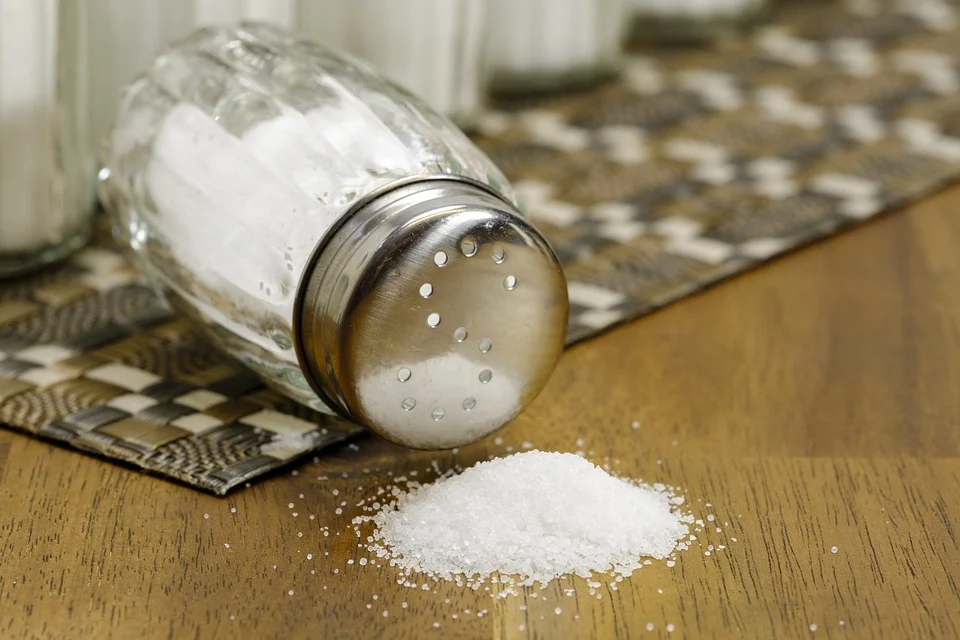钠可能是我们生存的基本元素,但我们大多数人摄入太多。根据 《美国人饮食指南2020-2025》,美国人平均每天摄入钠3393毫克,尽管每天推荐的钠摄入量只有2300毫克,也就是一茶匙食盐。
Consuming too much sodium has been linked to a number of serious health issues, including high blood pressure and an increased risk of heart disease and stroke (via CDC), not to mention uncomfortable and unsightly bloating from water retention (via Healthline). But before you decide to throw out all your shakers of table salt, sea salt, and pink Himalayan salt, you should be aware that around 75% of most dietary sodium consumption actually comes from processed foods and eating out (via Food Network). Only about 15% of sodium typically occurs naturally in food, with the remainder added during cooking and eating (via American Heart Association).
摄入过多的钠与一系列严重的健康问题有关,包括高血压、心脏病和中风的风险增加 ,更不用说由于水潴留而引起的不舒服和难看的肿胀。但是,在你决定扔掉你所有的餐桌盐、海盐和喜马拉雅粉红色盐瓶之前,你应该知道,大约75% 的膳食钠摄取实际上来自加工食品和外出就餐。通常只有大约15% 的钠天然存在于食物中,其余的10%在烹饪和食用过程中获取。

So how do we cut down on our sodium intake?
那么我们如何减少钠的摄入量呢?
First, be aware that a lot of foods contain sodium, including ones you may not suspect. In fact, the American Heart Association's "salty six" list of the top sodium sources in the American diet includes, in order, breads and rolls, pizza, sandwiches, cold cuts and cured meats, soups, burritos and tacos. That slice of bread might not taste salty, but it can pack in quite a lot of sodium, which adds up over time.
首先,要知道很多食物都含有钠,包括那些你可能不会怀疑的食物。事实上,美国心脏协会列出的美国饮食中最主要的钠源“咸六条”依次包括面包和面包卷、比萨饼、三明治、冷切和腌肉、汤、玉米煎饼和玉米卷。那片面包可能尝起来不咸,但是它含有大量的钠,这些钠会随着时间的推移而累积起来。
It's also important to pay attention to nutritional labels and ingredient lists, especially since the same food products from different manufacturers can contain wildly different levels of sodium. Look for labels indicating "unsalted" (no sodium added, though there may still be naturally occurring sodium), "reduced sodium" (more than 25% reduction in sodium than naturally occurring), "low sodium" (140 milligrams per serving), "very low sodium" (35 milligrams per serving), or "sodium free (less than 5 milligrams a serving) (via University of Michigan Medicine). Also look for hidden sources of sodium in the ingredient list. A good clue is that they all contain the word sodium in their name, though they are often items that you may not associate with sodium, such as monosodium glutamate (MSG), sodium bicarbonate (baking soda), sodium benzoate, and disodium phosphate.
同样重要的是要注意营养标签和配料表,特别是因为来自不同制造商的同一种食品可能含有不同含量的钠。寻找标明“无盐”(不添加钠,尽管可能还有天然钠)、“少钠”(钠含量比天然钠含量减少25% 以上)、“低钠”(每份140毫克)、“微量钠”(每份35毫克)或“不含钠(每份少于5毫克)”的标签。还要在成分表中寻找钠的隐藏来源,一个很好的方式是,寻找名字中都含有钠这个词的成分,尽管它们通常是一些你可能不会联想到钠的物品,比如味精、碳酸氢钠、苯甲酸钠和磷酸一氢钠。







